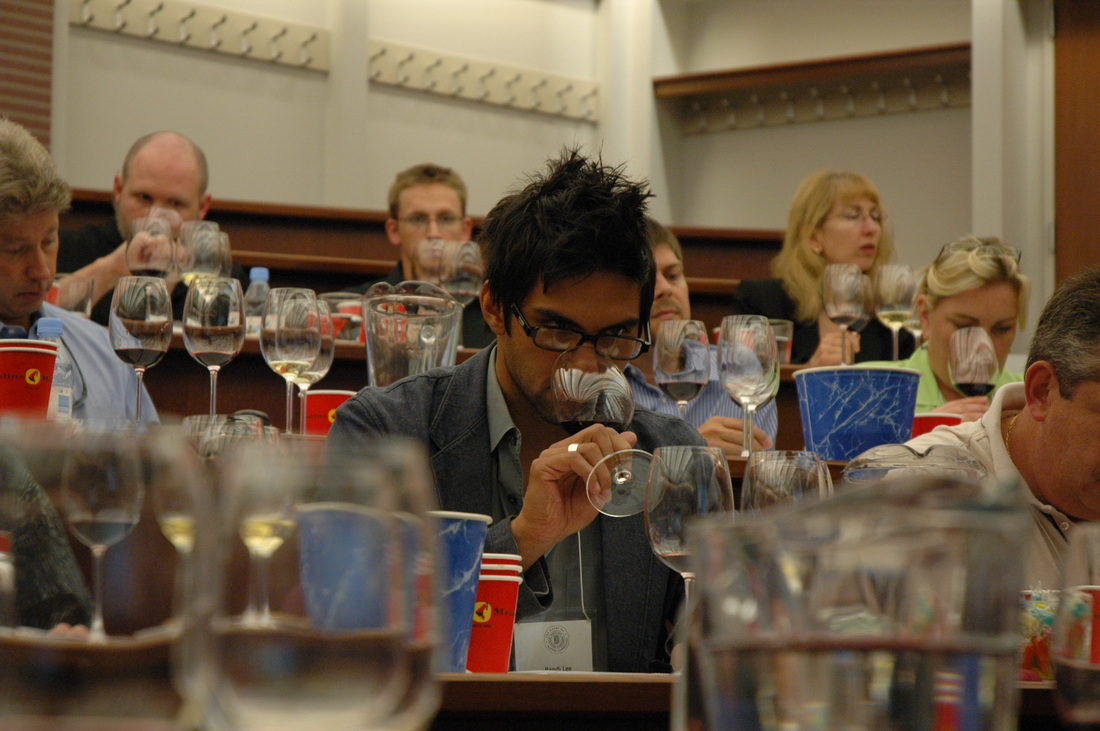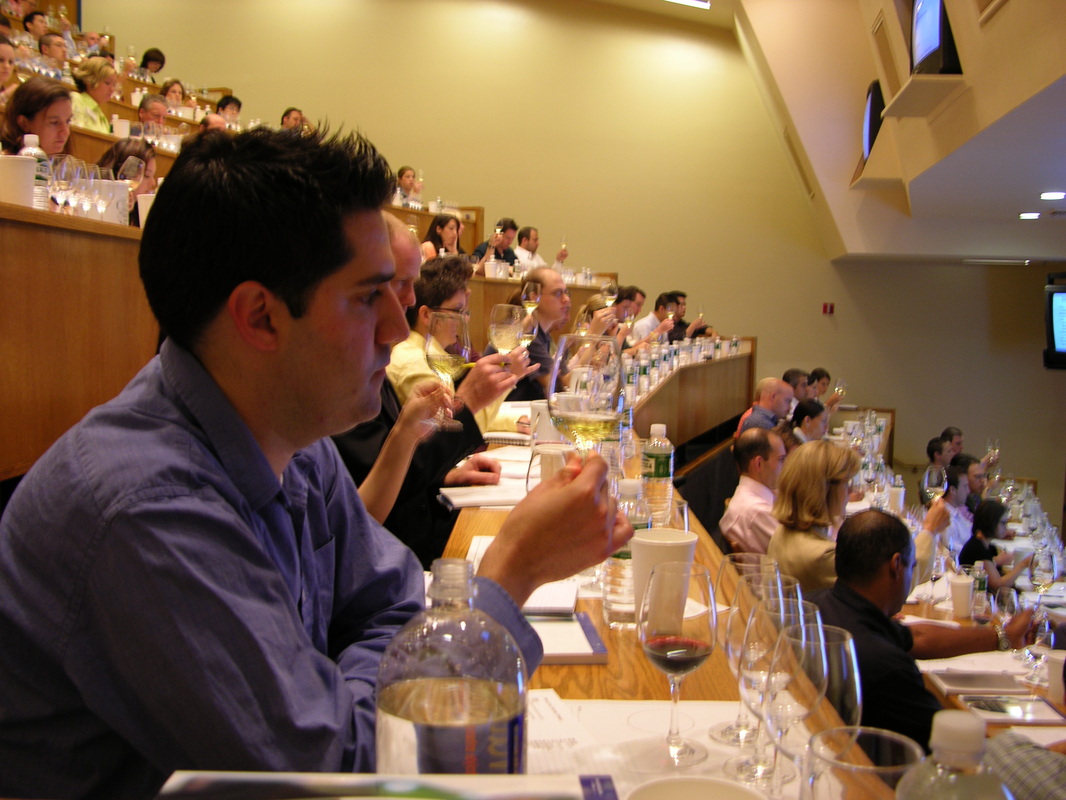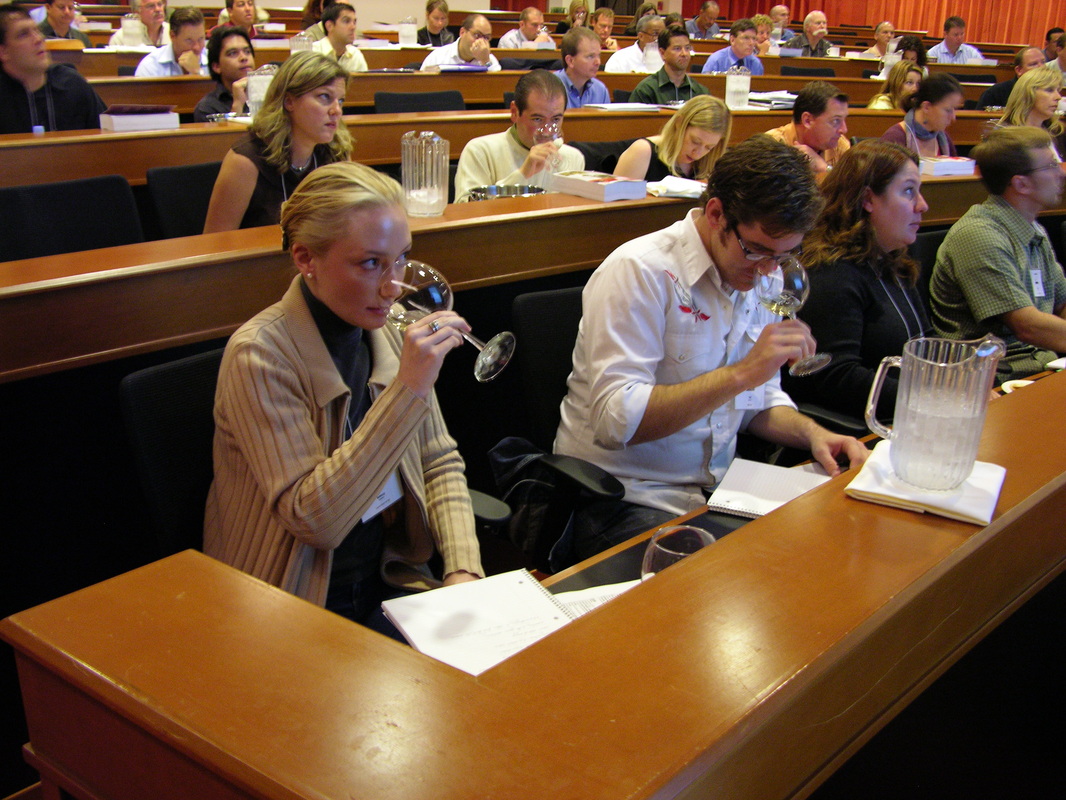n
· 25 minute time limit
· Six wines tasted blind: three whites and three reds
· The wines used in the exam are classic grapes and classic wines from the world’s major wine regions.
· The exam is oral—writing is not permitted.
· The student’s score is based on their ability to accurately describe the sight, nose, and palate of each wine using the Master Sommelier deductive tasting grid (see link below)
· The student then deduces the identity of each wine including the grape variety, country, region, appellation, quality level (if appropriate), and vintage.
· The student must score 60% of possible points to pass the Advanced Examination, and 75% of the possible points to pass the Master’s Examination.
Over the years, I’ve coached an untold number of students taking the tasting exams at both the Advanced and Master’s level. Here’s a summary of advice and suggestions I’ve commonly given to those preparing for the exams. If you’re working towards an exam, I think you’ll find it useful. If not, it will provide an interesting glimpse into our tasting exams and how students prepare for them.
Using the Grid
The tasting exams are based on the M.S. tasting grid which highlights the important aspects of a wine in terms of appearance, aroma, palate, and making a conclusion. If you’ve never seen the grid before, it can be found at the following page on the M.S. website:
https://www.mastersommeliers.org/sites/default/files/ES%20Tast-Deductive%20Tasting%20Format%20March%202017.pdf
Consistency: the grid is your mantra and security blanket. Use it the same way every time for every wine so it feels like a routine.
Be disciplined about how your use the grid: fellow Master and good friend Steven Poe has a saying about tasting drawn from his military career: think long, think wrong. I couldn’t agree more. Be concise with your description of a wine and stick to the grid. Mistakes are almost inevitable once stream of consciousness starts to creep into your thinking and description.
Bundle your descriptors in groups accordingly as several for fruit, non-fruit etc.
If you find yourself leaving out important parts of the grid or using it inconsistently, it’s useful to practice talking through wines out loud (covered in the next post) so the grid becomes complete and automatic.
· Overall: get it out of the way in 20-30 seconds. Everything you need to say is literally right in front of you. Get through the clarity, brightness, and color quickly but accurately.
· Color: hone in on the difference between straw and yellow in white wines (think legal pad or taxi for the latter), and ruby red and garnet-reddish brown for reds. Yellow and garnet denote possible age in a wine. Note it these colors if are there; don’t be surprised to find some evolution in the glass as in the form of dried fruit and evolved non-fruit qualities from either extended barrel age or bottle age. The appearance of a given wine helps set up the rest of the tasting sequence and also helps you connect the dots.
· Secondary colors: look for green and sliver in whites that denote youth and/or cool climate. With reds, be sure to differentiate between the color of the core of the glass vs. the edge or rim. Give both colors and be aware that the color at the rim is practically always going to be lighter and more evolved than the color at the center of the glass. Rarely, if ever, will you find the opposite.
· Viscosity/tears/legs: this is one of the two or three times during the four minutes and ten seconds of tasting a wine that you should pause and wait for something to happen (tasting to assess sweetness/dryness and the structure are the others). When checking the viscosity, swirl the glass, hold it, and wait for at least 3-5 seconds. Allow time for the wine to set up on the sides of the glass and the tears/legs to begin to fall. If swirling the glass doesn’t seems to work, rotate the glass slowly in your fingers for several seconds then slowly turn the glass upright. That should do the trick.
· General: because you’ve gotten through the appearance of the wine quickly, you’ve allowed yourself a lot of time to smell the wine; that’s a good thing, as the nose of the wine is the main event, the most important aspect of tasting.
· Initial impression: many times when first smelling a wine, something leaps out of the glass and really gets your attention causing that little internal voice to say that “this is X!” If that happens, by all means thank the internal voice, register the idea, and then park it in your internal field. However, don’t immediately try to force the wine into the mold of whatever the initial impression is, or you might suddenly find yourself in in the completely wrong place. Jump to conclusions suffer contusions.
· Fruit descriptors: expand your descriptors and make sure that you’re using all the fruit groups. For white wines, look at apple/pear, citrus fruit, tropical fruit, and stone or pit fruit. For red wine, the groups include red fruits, black fruits, blue fruits, and dried fruits. While everyone’s impressions and memories of fruits will be unique, try be as specific as you can.
· Advice: if you’re having trouble identifying a particular fruit aroma, try making it something totally different and unrelated as in a non-fruit or earth component. You’ll often get a very quick and accurate impression by simply contrasting an aroma with something it’s not.
· Quality of fruits: be as accurate as you can with the quality of the fruits, as in tart citrus vs. sweet citrus, or fresh fruit vs. dried fruit vs. cooked fruit. Also be aware that fruit qualities for both white and red wines often change between the nose and palate. The ripe mango and other tropical fruits on the nose of a dry Pfalz Riesling often become tart and under ripe on the palate. The same goes for red wines; the ripe black fruits on the nose of a McLaren Vale Shiraz often turn to tart cranberry and red raspberry on the palate. Lots of variations are possible here so be aware the qualities of the fruit and if they change from nose to palate.
· Non-fruit descriptors: to me non-fruit is one of the two most important elements in terms of being able to identify a given wine (structure is the other). As with the fruit descriptors, be sure to consider the entire list when smelling a wine. These include floral qualities, pepper spice and brown spice notes (the latter probably denoting oak), herbal and vegetal notes, botrytis on white wines (a combination of honey and stone fruits), and others. Also be aware that these qualities, like the fruit, can and will often change from nose to palate. If so, be sure to note.
· Earth and mineral: it’s important to distinguish between inorganic and organic earth—literally the difference between rocks and dirt. Make the distinction and don’t be surprised to find both in the same wine. If so, note it and as with the fruit and non-fruit elements be sure to mention if the minerality/earthiness changes from the nose to the palate. It often does. Also, earthiness in wine is usually accompanied by other components such as damp leaves, forest floor, mushroom/truffle, and more. If you find earth in a wine, look beyond to these other related aromas and flavors—they’re probably there and just as important.
· Wood: with wood, the major goal is really just to see if it’s actually present in the wine and if so, whether the wood is used or new. Be sure to note any and all wood descriptors together as a group. Also make sure to repeat any that are important on the palate.
· Important note: don’t obsess with the origin of the oak, as in American vs. French. Winemakers are now using multiple different kinds of oak on the same wine. It’s become an almost pointless exercise.
End of part one. It the next post I’ll cover the palate and making a conclusion as well as using associated rehearsal to practice tasting for an exam.
nn


